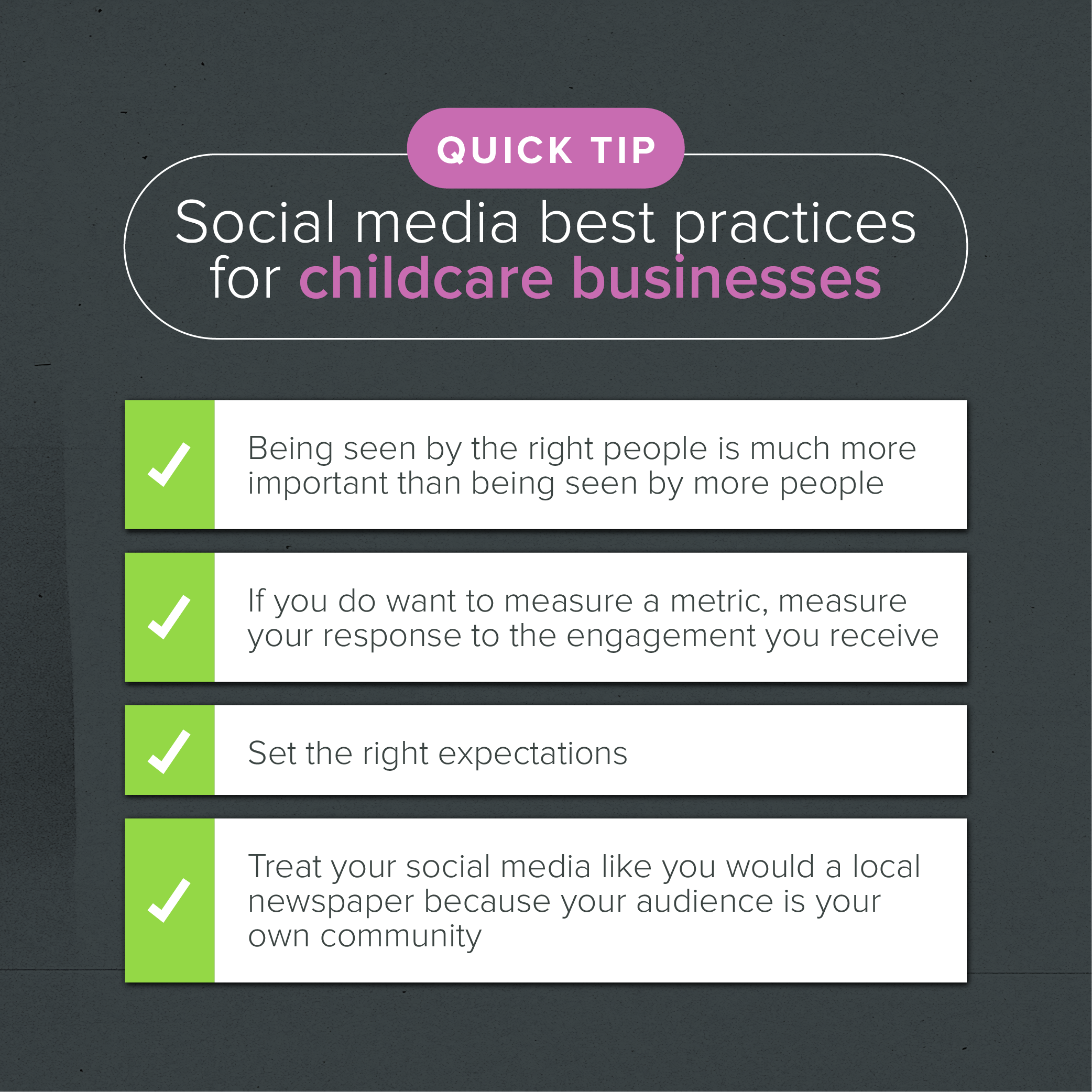The purpose of your personal social media is very different from the purpose of your business’s social media.
You use social media best practices for your business to spread brand awareness, promote your services, and engage your community. Your business’s social media is closely tied to your bottom line — the purpose is ultimately to get people in the door.
It’s a much different type of engagement than your personal social media, which you use to share your life with people who care about you. This is where you post photos from a family trip to a pumpkin patch, complete with fun caption. Twenty of your friends like it, four people comment on it, and you reply to those comments. That’s great engagement.
Shouldn’t it work the exact same way on your business social media accounts? Well, not exactly.
Your Business Account vs. Your Personal Account
It’s unrealistic for a business social media account to expect the same kind of engagement as a personal account — and that’s because of your relationship with your audience.
Your friends and family engage with your personal social media because they care about you personally. That engagement is an extension of your existing relationship into the digital world. Your business’s social media is different. No matter how close you get with your clients, the foundation of that relationship is transactional.
Your followers are looking for something in exchange for their engagement. They wouldn’t follow you and engage with you if you weren’t offering something they wanted.
Ultimately, your audience of parents wants peace of mind — they want to see pictures of their children playing safely and happily. It’s much like the way customers follow retail businesses for coupons and product information. Even when that relationship is elevated, as with Wendy’s humorous Twitter account, it’s still more than engagement for engagement’s sake.
That’s where social media best practices for businesses come into play. Personal accounts have very few rules beyond platform policies, but business accounts need to follow certain guidelines to compete in the marketplace.

Aim for More Than Engagement
When it comes to social media best practices for businesses, engagement in and of itself doesn’t mean much.
As business owners, we see huge, national brands with tons of followers, and we want the same for ourselves. But the hard truth is this: That’s not realistic for a local business. Some big, household-name brands have millions of followers, but local businesses may not even have a million people living in their city.
Being seen by the right people is much more important than being seen by more people. What matters is that you’re increasing your brand awareness by keeping your name and logo at the top of the right people’s feeds.
Your social media is part of your digital storefront just as much as your website and Google reviews. Use it to represent your business as well as you can, even if you don’t have any engagement yet. People will still be able to find you on social media and distinguish you from your competitors.
Measure Metrics That Matter
Honestly, local businesses shouldn’t worry about social media metrics too much.
If you want to measure a metric, measure your response to the engagement you receive. Are you responding to comments? Are you answering questions?
You can also measure the ratio of impressions (reach) to reactions (likes). This ratio will give you an idea of how many people who see your posts actually interact with them.
For example, 10 reactions out of 100 impressions is great, but 10 reactions out of 1,000 impressions isn’t. Try to gain followers by using local hashtags and tagging your location on each individual post. Doing this will increase your impressions and should lead to new followers in your target market.
Set Realistic Expectations
Setting realistic expectations from the beginning of your social media journey is crucial to avoiding disappointment in the long run. Starting a social media account for a brick-and-mortar business with the goal of going viral will set you up for failure — and is the wrong goal for a local business.
An example of the “right” kind of goal would be to acquire 10 highly engaged, five-star-fit followers rather than 1,000 followers who love your content but will never become clients.
Know Your Audience
Keep in mind that the social media best practices for businesses touted online aren’t usually written for local brick-and-mortar companies. They’re written for huge brands with the resources to post all day, every day. Be sure you focus on the advice that makes sense for you and your business.
Ultimately, your goal should be to connect your business with potential new clients and keep your brand top of mind for people in your target market who are also in your community. As a local business, you wouldn’t advertise in a national newspaper, so why try to gear your social media toward the entire nation?
Treat your social media like you would a local newspaper, because your audience isn’t everyone — your audience is your community.
Subscribe
Sign up with your email address to receive news and updates.

